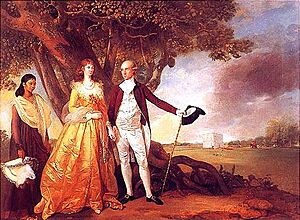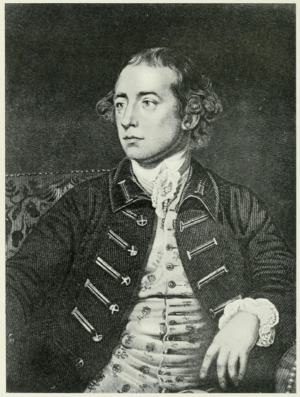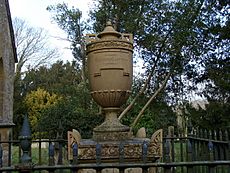Warren Hastings facts for kids
Quick facts for kids
Warren Hastings
|
|
|---|---|
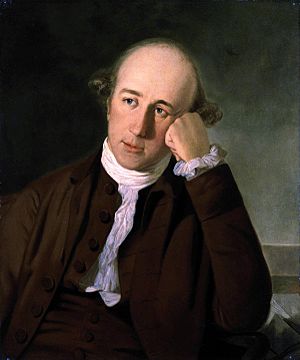
Portrait by Tilly Kettle
|
|
| Governor-General of the Presidency of Fort William | |
| In office 20 October 1773 – 8 February 1785 |
|
| Monarch | George III |
| Preceded by | Position created |
| Succeeded by | Sir John Macpherson, Bt As acting Governor-General |
| Governor of the Presidency of Fort William (Bengal) | |
| In office 28 April 1772 – 20 October 1773 |
|
| Preceded by | John Cartier |
| Succeeded by | Position abolished |
| Personal details | |
| Born | 6 December 1732 Churchill, Oxfordshire |
| Died | 22 August 1818 (aged 85) Daylesford, Gloucestershire |
| Nationality | British |
| Alma mater | Westminster School |
Warren Hastings (born December 6, 1732 – died August 22, 1818) was an important British leader. He became the first Governor-General of Bengal in 1772. He worked for the East India Company, a powerful British trading company. Hastings and Robert Clive helped set up the British Empire in India. He was known for being a strong organizer and making many changes. From 1779 to 1784, he led the East India Company's forces. They fought against local Indian states and the French. The British forces were well-organized and kept their power. France lost much of its influence in India. Later, in 1787, Hastings faced a long trial in Britain. He was accused of wrongdoing but was found innocent in 1795.
Contents
Warren Hastings's Early Life
Warren Hastings was born in 1732 in Churchill, Oxfordshire. His family was once wealthy but had lost their money. His mother died soon after he was born. Warren was raised by his grandfather. He went to a charity school with other children from his village. Later, an uncle helped him go to Westminster School in London.
At Westminster School, he was a top student. He studied with future Prime Ministers and a famous poet. But he had to leave school at 16 when his uncle passed away. In 1750, he joined the East India Company. He sailed to Calcutta (now Kolkata) in India. There, he worked hard and learned a lot. He spent his free time studying India. He learned to speak Urdu and Persian.
His hard work led to a promotion in 1752. He was sent to Kasimbazar, a big trading center in Bengal. He learned more about Indian politics there. At that time, British traders depended on local rulers. The political situation in Bengal was unstable. The old ruler, Alivardi Khan, was likely to be replaced by his grandson, Siraj ud-Daulah. Siraj ud-Daulah was known for not liking Europeans.
When Alivardi Khan died in 1756, the British traders in Kasimbazar were in danger. On June 3, the British surrendered to prevent a fight. Hastings was put in prison in Murshidabad. The Nawab's forces then attacked and captured Calcutta. Many British people were locked up in terrible conditions. This event is known as the Black Hole of Calcutta.
Hastings stayed in Murshidabad for a while. He even helped the Nawab as a go-between. But he feared for his life and escaped to Fulta island. Many British refugees from Calcutta were there. He met and married Mary Buchanan there. She was the widow of someone who died in the Black Hole.
Soon after, a British army arrived from Madras (now Chennai). It was led by Robert Clive. Hastings joined Clive's forces as a volunteer. They quickly took back Calcutta in January 1757. The Nawab then wanted peace, and the war ended. Clive was impressed by Hastings. He arranged for Hastings to go back to Kasimbazar. Later in 1757, fighting started again. This led to the Battle of Plassey. Clive won a major victory against the Nawab. Siraj ud-Daulah was removed from power. His commander, Mir Jafar, took his place. Mir Jafar helped the East India Company.
Moving Up in Power
In 1758, Hastings became the British representative in Murshidabad. This was a big step in his career. His job was like an ambassador. But as the East India Company gained more power, he often gave orders to the new Nawab. Hastings felt sympathy for Mir Jafar. He thought many of the Company's demands were too much. Hastings believed in building better relationships with Indian people and their rulers. He often tried to find a middle ground between the two sides.
During Mir Jafar's rule, the East India Company played a bigger role. They even took over defending Bengal from invaders. Mir Jafar became less effective as a ruler. In 1760, the Company's troops removed him from power. They replaced him with Mir Qasim. Hastings disagreed with this decision. He thought they should have supported Mir Jafar. But his opinions were not followed. Hastings built a good relationship with the new Nawab. Again, he had doubts about the demands he passed on from his superiors. In 1761, he was called back to join the Calcutta council.
Challenges in Bengal
Hastings was upset when he looked into trading problems in Bengal. He believed some European and Indian merchants were cheating. They used the British flag to trade illegally. Local tax officials were afraid to stop them. Hastings felt this was bad for Britain's reputation. He asked the Calcutta authorities to stop it. But the Council rejected his ideas. Many members had made money from this trade themselves.
Not much was done to stop these problems. Hastings thought about leaving his job and going back to Britain. But new fighting broke out in Bengal. Mir Qasim became more independent as a ruler. He rebuilt Bengal's army. He hired European trainers and soldiers. This greatly improved his forces. In 1764, a dispute happened in Patna. Mir Qasim captured the British soldiers there. He threatened to kill them if the East India Company sent troops. When Calcutta sent troops anyway, Mir Qasim executed the hostages. British forces then attacked. They won several battles, ending with the Battle of Buxar in October 1764. After this, Mir Qasim fled. The Treaty of Allahabad (1765) gave the East India Company the right to collect taxes in Bengal.
Hastings left his job in December 1764 and sailed to Britain. He was sad that his more moderate ideas had been rejected. In London, Hastings spent a lot of money. He lived in fancy places and had his picture painted. But he had not become rich in India like many others. He soon had huge debts. Hastings realized he needed to go back to India to earn money. He asked the East India Company for a job. At first, they said no because he had made enemies. But Robert Clive helped him get a job as a deputy ruler in Madras. He sailed in March 1769. On the trip, he met Baroness Marian von Imhoff. Hastings's first wife had died in 1759. He later married Marian in 1777.
Leading Madras and Calcutta
Hastings arrived in Madras after the First Anglo-Mysore War (1767–1769). During this war, Hyder Ali had threatened to capture Madras. The war ended with a treaty, but the conflict continued. Three more Anglo-Mysore Wars followed. In Madras, Hastings made changes to trading rules. These changes helped both the Company and Indian workers.
Hastings believed that the three main British settlements – Madras, Bombay, and Calcutta – should be under one rule. In 1772, he became Governor of Calcutta. This was the most important settlement. In Britain, people were working to change the government system. They wanted one ruler for all British-controlled areas in India. The capital would be Kolkata. Hastings became the first Governor-General in 1773.
As Governor, Hastings worked to stop bandits in Bengal. He was largely successful. He also faced the terrible Great Bengal famine of 1770. This famine caused millions of deaths.
Governor-General of India
The Regulating Act of 1773 put Madras and Bombay under Bengal's control. It made Hastings the new Governor-General. But his power was limited. He was one of five members on a Supreme Council. This made his exact role a bit confusing.
Hastings quickly started to make changes. He moved government tasks from Murshidabad to Calcutta. He worked very hard in 1773. He made money systems the same. He ordered that Hindu laws be written down. He also reformed the tax system. He set land taxes and stopped bad practices by private traders. He created a good postal service. He supported mapping India and built public grain storage places. This was to prevent another famine like the one in 1770. Hastings had a deep respect for India. He had lived there since he was a teenager. He spoke good Bengali, Urdu, and Persian.
Wars and Challenges
In 1777, during the American Revolutionary War, France joined the fight against Britain. France focused on the Caribbean and India. Meanwhile, Madras and Bombay were having serious problems. Madras faced Hyder Ali of Mysore. Bombay was fighting the Marathas. France sent a fleet to India. Hastings faced a huge challenge. Only Oudh was an ally. For six years (1779–1784), there was intense fighting. Hastings sent armies across India to help Bombay and Madras.
His biggest success was breaking up the enemy alliance. By 1782, he made peace with the Marathas. The French fleet arrived late in 1782. They found that the Indian alliance had fallen apart. Hastings had captured all the French ports. The French could not achieve anything. When the wars ended in 1784, British rule in India was strong. The French position was much weaker. The East India Company now had an efficient system. However, Hastings's wartime efforts cost a lot of money. London did not send funds. His ways of using local money became a main point of attack in his later trial.
Relations with Bhutan and Tibet
In 1773, Hastings helped the Raja of Cooch Behar. This area was invaded by Bhutan. Hastings agreed to help if Cooch Behar recognized British rule. The Raja agreed. British troops pushed the Bhutanese out.
The Bhutanese ruler faced problems at home. The Sixth Panchen Lama of Tibet asked Hastings to stop fighting. He offered friendship in return. Hastings saw this as a chance to build ties with Tibet and Bhutan. He wrote to the Panchen Lama. He suggested a "treaty of friendship and trade" between Tibet and Bengal.
In 1783, Hastings sent a mission to Tibet. It was led by Samuel Turner. Turner could not visit the capital, Lhasa. But he was promised that Indian merchants would be welcome there. Turner brought back two yaks for Hastings. One male yak survived the trip to England. The famous artist George Stubbs painted its picture.
Hastings's return to England ended further efforts to work with Tibet.
The Trial of Warren Hastings
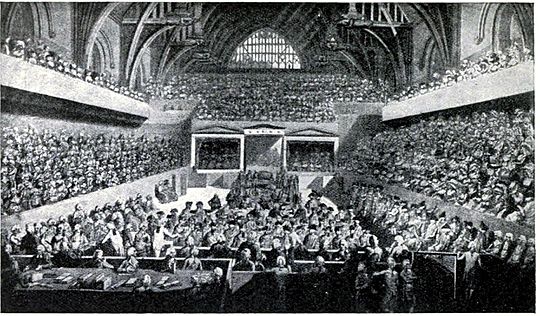
In 1785, after 10 years of service, Hastings resigned. He had helped to expand British rule in India. Earl Cornwallis replaced him.
When Hastings returned to England, he was put on trial. He was accused of wrongdoing in India. Important politicians like Edmund Burke led the prosecution. The trial lasted for seven years. Hastings said the cost of defending himself was ruining him. He was found innocent of all charges on April 24, 1795. The East India Company later paid him £4,000 each year. This payment started from when he returned to England. He received this money for almost 29 years.
Later Life
In 1788, Hastings bought an estate in Daylesford, Gloucestershire. This was where his family's old home had been. He rebuilt the house and the church there. He was buried in that church two years later. In 1801, he became a Fellow of the Royal Society. Even with money from the East India Company, Hastings was still in debt when he died.
His Impact and Legacy
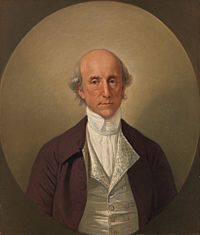
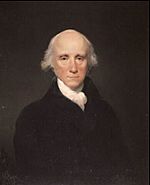
In the late 1700s, many British leaders realized something important. To govern India, they needed to understand its religions, customs, and laws.
Under Hastings, many rules for governing British India were set. Hastings respected ancient Hindu scriptures. He wanted British law to look back to the oldest Indian traditions. This meant that Hindu scholars helped shape the laws. This approach highlighted the Hindu caste system. It also affected other religions. Hastings helped write down Hindu laws and Muslim law books.
In 1781, Hastings founded Madrasa 'Aliya in Calcutta. In 1784, he supported the creation of the Bengal Asiatic Society. This society collected information about India. Hastings's work as a leader had two sides. He made changes that shaped India's future. But he also created British India, even though he didn't want such a strong British presence.
Places Named After Him
The city of Hastings and a suburb of Melbourne, Australia, are named after him. There is also a road and a neighborhood in Hastings, Kolkata, India, named after him.
"Hastings" is the name of a school house at La Martiniere Calcutta (Kolkata). It is red. It is also a house at Bishop Westcott Girls' School, Ranchi. "Hastings" is a senior house at St Paul's School, Darjeeling, India.
RIMS Warren Hastings was a ship built in 1893. It hit a rock and sank off Réunion in 1897.
In Books and Stories
Hastings was interested in having the Bhagavad Gita translated into English. His efforts led to the first translation by Charles Wilkins in 1785. Hastings wrote the introduction for it.
"Warren Hastings and His Bull" is a short story by Indian writer Uday Prakash. It was made into a play. It shows Hastings's interactions with traditional India.
A short story by Shivprasad Singh 'Rudra' Kashikeya features Chait Singh, the Raja of Banaras. He is in conflict with Hastings. Hastings is imprisoned by the Raja but escapes.
The historical mystery novel Secrets in the Stones by Tessa Harris discusses Hastings's career.
Hastings is mentioned in George Eliot's novel Middlemarch. His desire for Daylesford is compared to a character's greed for money.
Some people believe Hastings was the father of Eliza de Feuillide. She was a cousin of Jane Austen. Some scholars see similarities between Hastings and Colonel Brandon in Austen's Sense and Sensibility. Both went to India at age 17. Both may have had daughters named Eliza. Both were involved in a duel.
See also
 In Spanish: Warren Hastings para niños
In Spanish: Warren Hastings para niños


